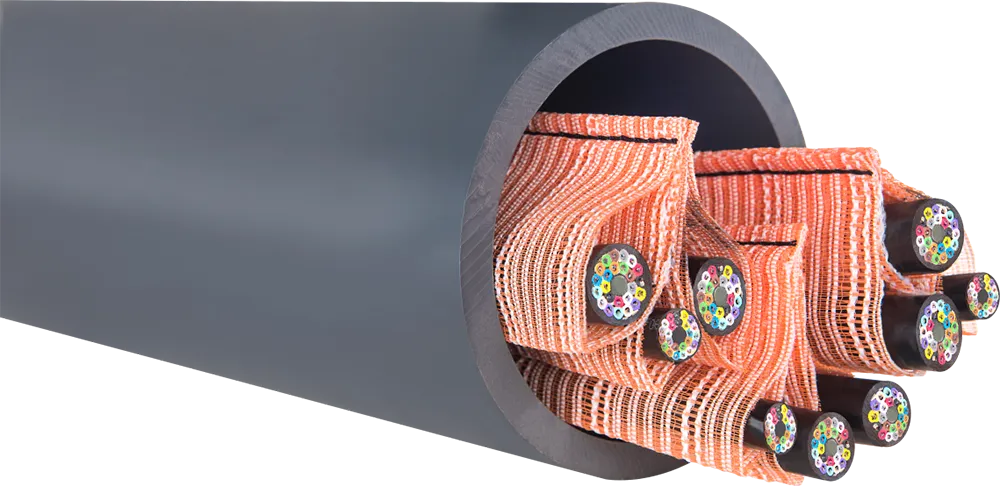To address growing networking extension requirements driven by the emerging Industrial Internet of Things (IIoT), Moxa has launched the industrial Ethernet extender switch IEX-408E-2VDSL2 here at ITS America 2016. The IEX-408E-2VDSL2 supports two VDSL2 ports and six Ethernet ports for long distance data transmission over twisted-pair copper wiring. The switch enables users to leverage existing cables to upgrade and extend their networks quickly, as well as reduce costs – making it ideally suited to ITS a
June 14, 2016
Read time: 2 mins

To address growing networking extension requirements driven by the emerging Industrial Internet of Things (IIoT), 97 Moxa has launched the industrial Ethernet extender switch IEX-408E-2VDSL2 here at ITS America 2016.
The IEX-408E-2VDSL2 supports two VDSL2 ports and six Ethernet ports for long distance data transmission over twisted-pair copper wiring. The switch enables users to leverage existing cables to upgrade and extend their networks quickly, as well as reduce costs – making it ideally suited to ITS applications.
The IIoT is driving businesses to upgrade their existing networks to IP-based systems for centralised analysis and management. For example, road operators are upgrading traffic signal control systems and integrating CCTV surveillance into the same network to make roads safer and increase efficiency.
“In such cases, road operators are not only concerned about the cost, but also face time constraints in order to minimise the interference to road users.
Our IEX-408E-2VDSL2 Ethernet extender switch allows users to leverage legacy systems over twisted-pair copper wiring, which significantly reduces the project time and costs. As industries move towards the IIoT, the IEX-408E-2VDSL2 is an ideal solution to build reliable and cost-effective network infrastructure,” noted Jack Lin, product manager for Moxa’s Industrial Ethernet Switches.
The IEX-408E-2VDSL2 allows easy installation by supporting an automatic CO/CPE negotiation function for plugn- play deployment. The devices can easily be linked in series to form a long distance multidrop configuration – extending copper cable networks beyond the conventional distance limitations imposed by the Ethernet protocol.
With its compact DIN-rail design, the IEX-408E-2VDSL2 series is a great fit for IIoT and ITS applications in harsh operating environments with limited installation space.
The IEX-408E-2VDSL2 supports two VDSL2 ports and six Ethernet ports for long distance data transmission over twisted-pair copper wiring. The switch enables users to leverage existing cables to upgrade and extend their networks quickly, as well as reduce costs – making it ideally suited to ITS applications.
The IIoT is driving businesses to upgrade their existing networks to IP-based systems for centralised analysis and management. For example, road operators are upgrading traffic signal control systems and integrating CCTV surveillance into the same network to make roads safer and increase efficiency.
“In such cases, road operators are not only concerned about the cost, but also face time constraints in order to minimise the interference to road users.
Our IEX-408E-2VDSL2 Ethernet extender switch allows users to leverage legacy systems over twisted-pair copper wiring, which significantly reduces the project time and costs. As industries move towards the IIoT, the IEX-408E-2VDSL2 is an ideal solution to build reliable and cost-effective network infrastructure,” noted Jack Lin, product manager for Moxa’s Industrial Ethernet Switches.
The IEX-408E-2VDSL2 allows easy installation by supporting an automatic CO/CPE negotiation function for plugn- play deployment. The devices can easily be linked in series to form a long distance multidrop configuration – extending copper cable networks beyond the conventional distance limitations imposed by the Ethernet protocol.
With its compact DIN-rail design, the IEX-408E-2VDSL2 series is a great fit for IIoT and ITS applications in harsh operating environments with limited installation space.










